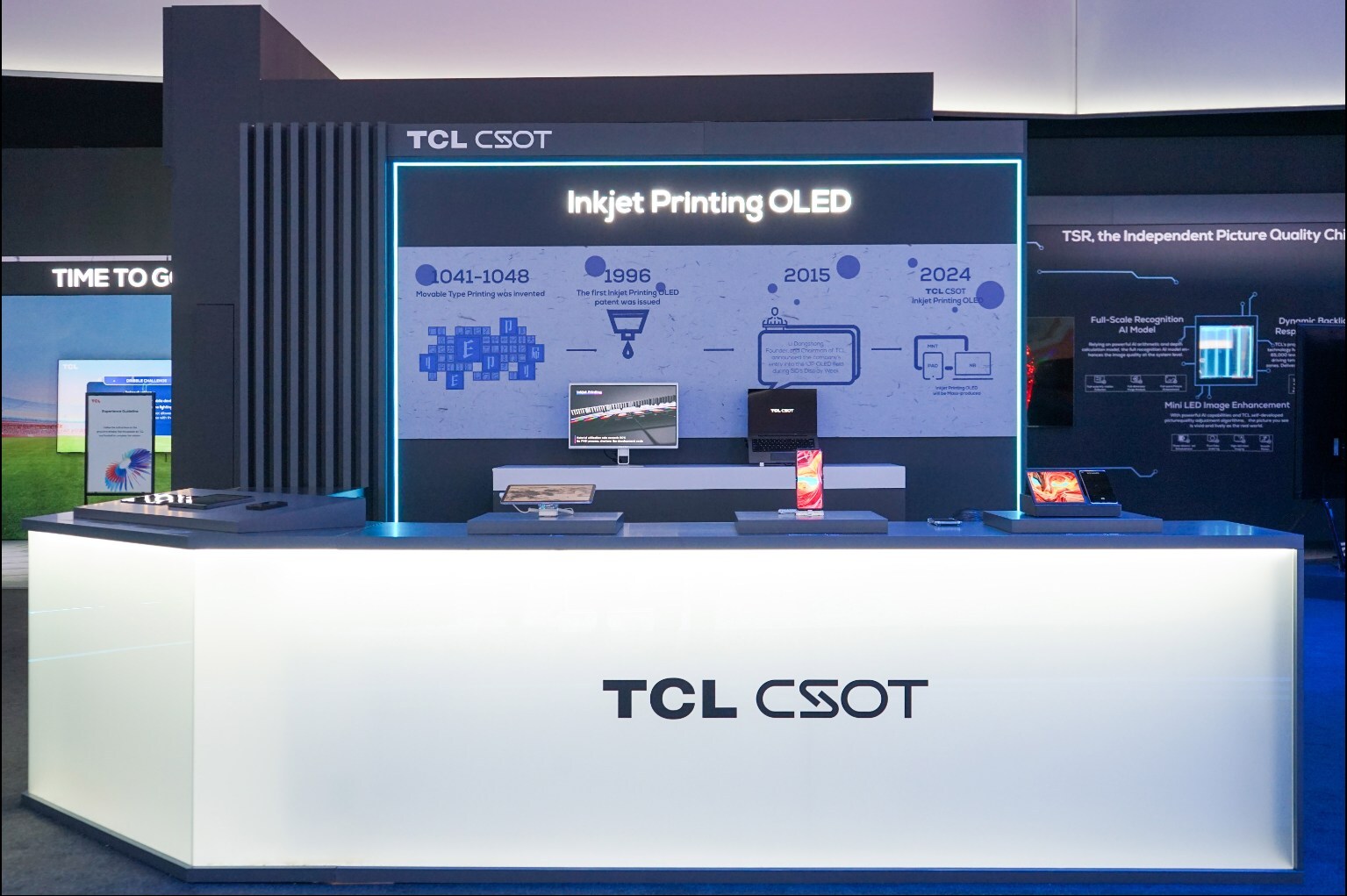
TCL CSOT, a display manufacturing subsidiary of TCL, is reportedly advancing rapidly in the field of OLED technology by investing heavily in inkjet-printed OLED panels. By adopting inkjet printing technology rather than traditional manufacturing methods, the company is aiming to simplify the OLED production process, thereby reducing costs and allowing for increased flexibility in screen sizes and designs. However, it has been seeing other important benefits.
The traditional method for creating OLED screens relies on vacuum thermal evaporation (VTE), which involves vaporizing organic materials and depositing them onto a substrate in a carefully controlled environment. While effective, this method is expensive, labor-intensive, and results in high material wastage, contributing to the overall cost of OLED displays.
TCL’s approach with inkjet printing instead deposits OLED materials directly onto the display substrate, saving materials and significantly lowering production costs. This shift is expected to streamline the production of OLED panels, making them more affordable and sustainable for a larger range of consumers.
In addition to affordability, TCL’s printed OLED panels promise improved brightness and color vibrancy. Standard OLED panels are known for their deep blacks and excellent color reproduction, but they often struggle with peak brightness compared to technologies like Mini-LED. TCL’s inkjet-printed OLEDs, however, could offer higher brightness levels, as the company claims to cut internal light loss by 50 percent and boost light output efficiency by about 1.5 times. Addressing this limitation can also potentially enhance HDR (high dynamic range) content, allowing for vivid and lifelike visuals with better contrast, especially in brightly lit rooms.
Beyond consumer benefits, TCL’s advancements in inkjet printing could also influence the global display industry by increasing competition with leading OLED manufacturers, like LG and Samsung. While these companies have long dominated the premium OLED space, TCL’s entry could open up the technology to a more budget-friendly segment.
The company is planning to initiate small-scale production of inkjet-printed OLED panels by the end of 2024 with a 21.6-inch 4K OLED panel specifically designed for medical monitors. By 2025, TCL aims to expand this production to include medium-sized OLED panels tailored for IT devices, such as laptops and monitors.







